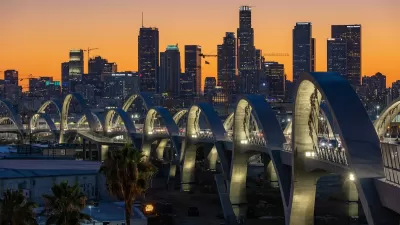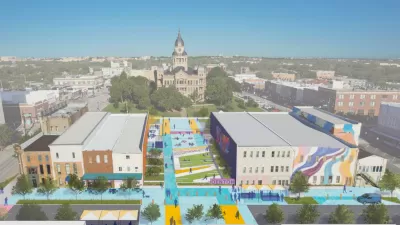A proposal calls for a reevaluation of the city’s skyways, a focus on street-facing businesses, and an improved public realm.

A study from the city of Minneapolis and the Downtown Alliance highlights the need for “more residents, better sidewalks, and some redevelopments” as part of a strategy to boost economic development in the city’s downtown, reports Bill Lindeke in the Minneapolis Post. “The main takeaway is the need for better sidewalks, places that boast street-front businesses, calmed traffic, and plenty of amenities. The report lumps all of this under the umbrella term “public realm,” describing the streets linking together currently thriving downtown areas.”
The study calls out the city’s famous skyways, noting that skyway traffic often makes street-level sidewalks more deserted. “Rather gently, the report suggests further study to ‘determine the viability of appropriately configuring the skyway to meet current and future needs.’ In other words, there are probably a few parts of the skyway system that could be amputated, and street life returned to the sidewalk where it belongs.”
Urbanists familiar with Minneapolis have long argued that the city needs a more comprehensive sidewalk network and public-facing downtown businesses to counteract the wide swaths of building faces that prompted William H. Whyte to call it “the blank wall capital of the United States.”
The study also references the downtown entertainment district as a key component of revitalization, as well as the need to redevelop some parcels that could bring new businesses and development to the area.
FULL STORY: In a pleasant surprise, new plan for downtown St. Paul is full of good ideas; here are some of the best

Alabama: Trump Terminates Settlements for Black Communities Harmed By Raw Sewage
Trump deemed the landmark civil rights agreement “illegal DEI and environmental justice policy.”

Planetizen Federal Action Tracker
A weekly monitor of how Trump’s orders and actions are impacting planners and planning in America.

The 120 Year Old Tiny Home Villages That Sheltered San Francisco’s Earthquake Refugees
More than a century ago, San Francisco mobilized to house thousands of residents displaced by the 1906 earthquake. Could their strategy offer a model for the present?

In Both Crashes and Crime, Public Transportation is Far Safer than Driving
Contrary to popular assumptions, public transportation has far lower crash and crime rates than automobile travel. For safer communities, improve and encourage transit travel.

Report: Zoning Reforms Should Complement Nashville’s Ambitious Transit Plan
Without reform, restrictive zoning codes will limit the impact of the city’s planned transit expansion and could exclude some of the residents who depend on transit the most.

Judge Orders Release of Frozen IRA, IIJA Funding
The decision is a victory for environmental groups who charged that freezing funds for critical infrastructure and disaster response programs caused “real and irreparable harm” to communities.
Urban Design for Planners 1: Software Tools
This six-course series explores essential urban design concepts using open source software and equips planners with the tools they need to participate fully in the urban design process.
Planning for Universal Design
Learn the tools for implementing Universal Design in planning regulations.
Clanton & Associates, Inc.
Jessamine County Fiscal Court
Institute for Housing and Urban Development Studies (IHS)
City of Grandview
Harvard GSD Executive Education
Toledo-Lucas County Plan Commissions
Salt Lake City
NYU Wagner Graduate School of Public Service





























